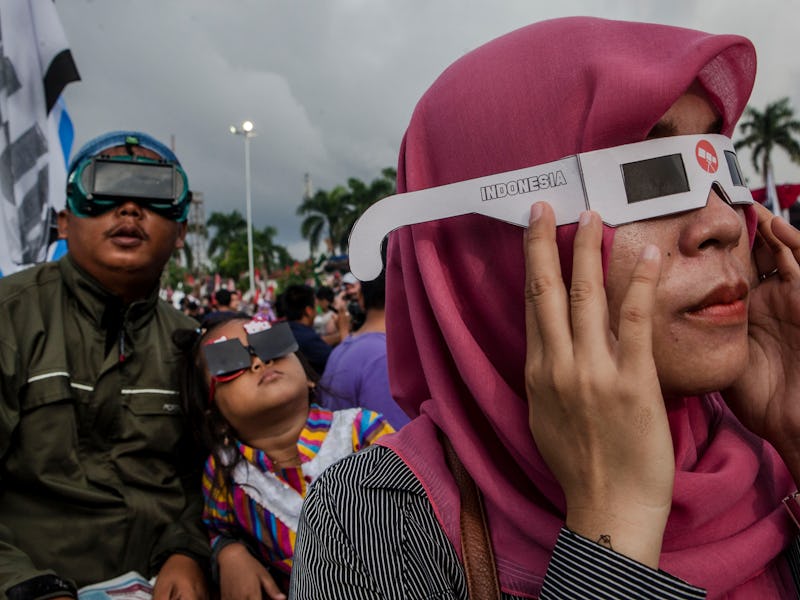Check Out the Best Photos of the 2016 Solar Eclipse
The moment of totality was dazzling for all.

Thousands of people were treated to a total solar eclipse across Indonesia and the Pacific Islands on Wednesday and we’ve got the long-exposure shots to prove it. The eclipse — which happened Tuesday night for those watching the live-stream in the United States — passed over a path 8,000 miles long, the moment of complete totality happening for about one to four minutes above each region in its wake.
While NASA scientists set up on the Micronesian island of Woleai to take their own photos, locals throughout Southeast Asia brought out their smartphones and hobby cameras. It’s an opportunity that doesn’t come too often — total solar eclipses typically only happen about every one to two years and the whole world isn’t privy to the show.
Follow #Eclipse2016 and the subsidiaries #Eclipse2016indonesia, #Eclipse2016jakarta, and #Eclipse2016singapore and you’ll see some spectacular shots. Here’s a roundup of some of our favorites, along with the work of professional photographers covering the event:
A shot from Indonesia — eclipse eye in Indonesian is gerhana mata.
Passengers on Flight 870 got to see one minute and 53 seconds of complete eclipse. People in the “eclipse-hunting” community were quick to buy tickets once it became obvious the flight would give them the flight of the lives — including this astronomer who totally lost his shit. Totality!
Here’s a photo of the total solar eclipse by professional photographer Ulet Ifansasti. This shot is from Palembang city, in the South Sumatra province in Indonesia. The solar eclipse in Indonesia was met with parties, colorful rituals, and Muslim prayers.
Another shot from Ifansasti — this one of a young girl in Palembang city wearing protective “eclipse glasses.” Accidental direct sun-viewing before the eclipse reaches totality is likely to cause retinal burns, so it’s best to glasses-up.
The 2016 eclipse in its various stages.
The eclipse allowed scientists a moment to study the corona — the outermost layer of the sun. The corona is made up of electrons moving along magnetic field lines, which determine its shape.
The moon and the sun align very occasionally because the geometry is complicated. The sun is about 400 times bigger than the moon, but the moon is 400 times closer to Earth, which allows them the opportunity to align. The next best eclipse glimpse will be on September 13 — while it won’t be a total eclipse, the annular eclipse means most of the sun will be covered by the moon. Parts of India, Africa, and Antarctica will get to see it live — North America won’t have the chance until August 2017.